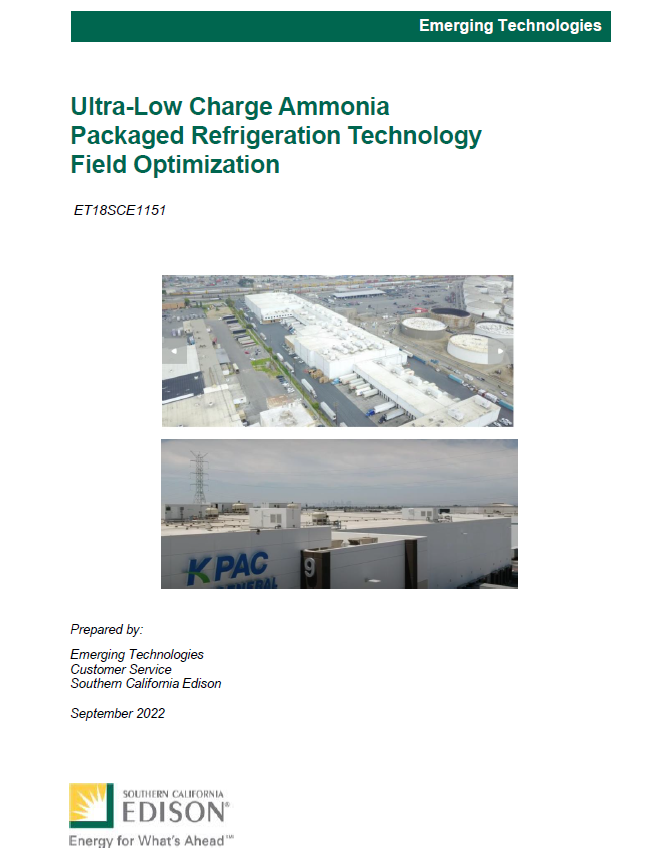Project Info
COMPLETE
 Project Title
Project Title
Ultra Low Charge NH3 Packaged Refrigeration Technology Field Optimization
Project Number ET18SCE1151 Organization SCE End-use Process Loads Sector Industrial Project Year(s) 2018 - 2023Description
To demonstrate and assess improved energy efficiency with continuous performance monitoring, flexible demand response and certified ADR capabilities for both low and high temp refrigeration. Project will utilize an ultra-low charge, zero GWP, flexible tonnage packaged system, continuous monitoring and advanced control strategies to enable Flexible DR Unit is more energy efficient than incumbent technology. Provide ongoing comprehensive real-time monitoring of all metrics to build a calibrated calculation tool to support further market adoption and/or program. Besides EE, there is an opportunity for Flexible Demand Response in various refrigeration control applications and this project will determine the best site control strategies to demonstrate DR. It is expected to achieve least 20% demand reduction by taking advantage of built-in inherent storage capabilities based on the thermal mass of frozen or refrigerated food—that allows to temporarily shed, shift or adjustment in power demand, key enablers for fast and flexible demand response. Additionally electric defrost control can also help add load to ameliorate renewable grid effects. Demonstrate and report on air quality and any water savings benefits achievable from use of the technology. This technology can replace all GWP and ODP refrigerants with an energy efficient and DR ready
Project Report Document
Loading PDF Preview...
